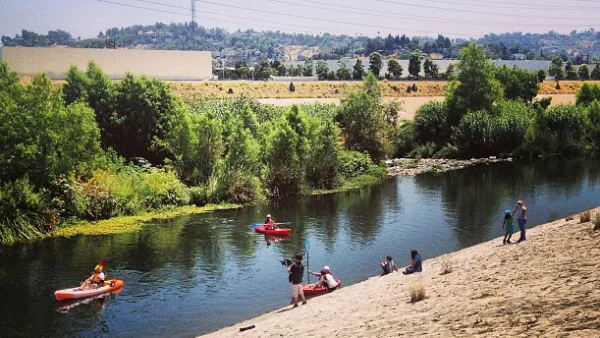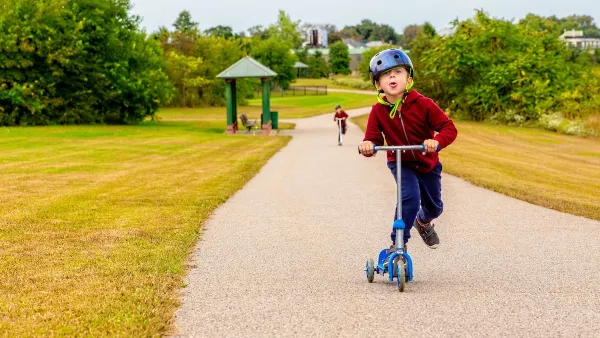Researchers have made a positive link between increased greenery in a child's neighborhoods and a reduction in aggressive behavior.

Researchers from the University of Southern California have identified the contribution that nature can play in reducing aggressive behavior in adolescents and teenagers. Reporting in Pacific Standard, Tom Jacobs writes that the study of over 1,200 children between the ages of 9 and 18, from 640 families in Los Angeles found that close proximity of green space to the children's homes resulted in less aggressive behavior.
“We found strong evidence supporting the benefits of neighborhood green space in reducing aggressive behaviors,” the researchers write. “The results of our adjusted analyses suggest a consistent pattern of decreased aggression associated with increasing residential green space within a 1000-meter buffer.”
They found no evidence this impact was limited to wealthier or poorer neighborhoods, and report it still held true after accounting for such factors as traffic density and proximity to freeways.
The study concludes that there is a clear benefit to mental health from interacting with natural environments, whether through providing access to areas for physical activity, reducing an area's ambient noise, or reducing pollution levels.
FULL STORY: Teenagers Surrounded by Green Are Less Aggressive

National Parks Layoffs Will Cause Communities to Lose Billions
Thousands of essential park workers were laid off this week, just before the busy spring break season.

Retro-silient?: America’s First “Eco-burb,” The Woodlands Turns 50
A master-planned community north of Houston offers lessons on green infrastructure and resilient design, but falls short of its founder’s lofty affordability and walkability goals.

Delivering for America Plan Will Downgrade Mail Service in at Least 49.5 Percent of Zip Codes
Republican and Democrat lawmakers criticize the plan for its disproportionate negative impact on rural communities.

Test News Post 1
This is a summary

Test News Headline 46
Test for the image on the front page.

Balancing Bombs and Butterflies: How the National Guard Protects a Rare Species
The National Guard at Fort Indiantown Gap uses GIS technology and land management strategies to balance military training with conservation efforts, ensuring the survival of the rare eastern regal fritillary butterfly.
Urban Design for Planners 1: Software Tools
This six-course series explores essential urban design concepts using open source software and equips planners with the tools they need to participate fully in the urban design process.
Planning for Universal Design
Learn the tools for implementing Universal Design in planning regulations.
EMC Planning Group, Inc.
Planetizen
Planetizen
Mpact (formerly Rail~Volution)
Great Falls Development Authority, Inc.
HUDs Office of Policy Development and Research
NYU Wagner Graduate School of Public Service





























